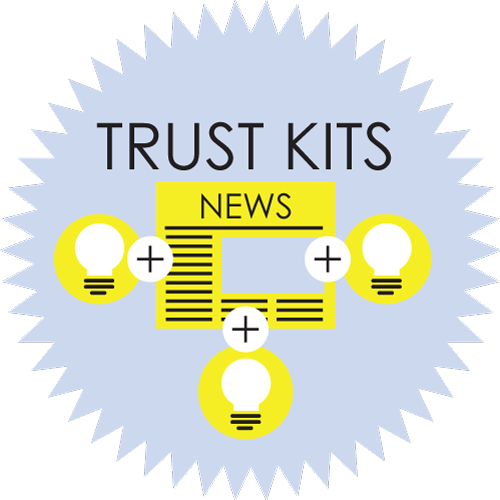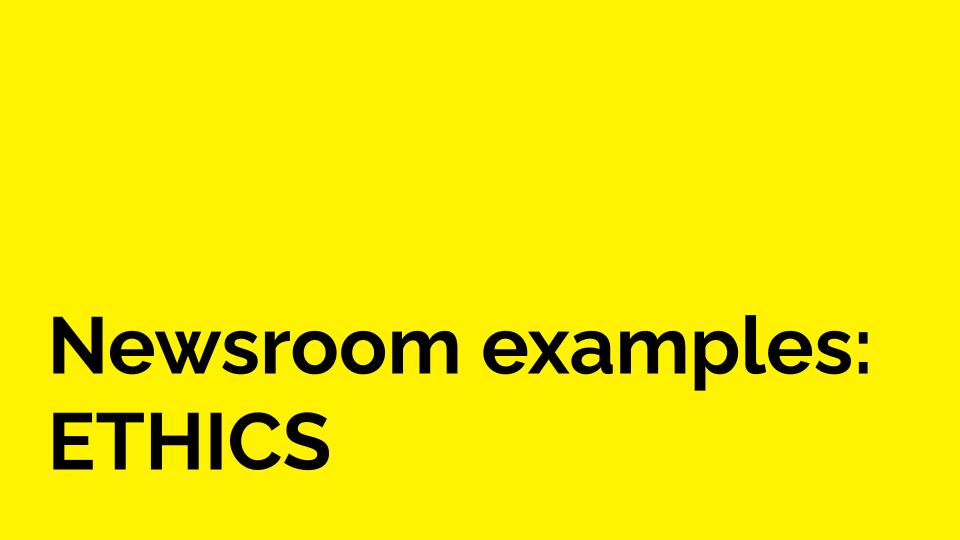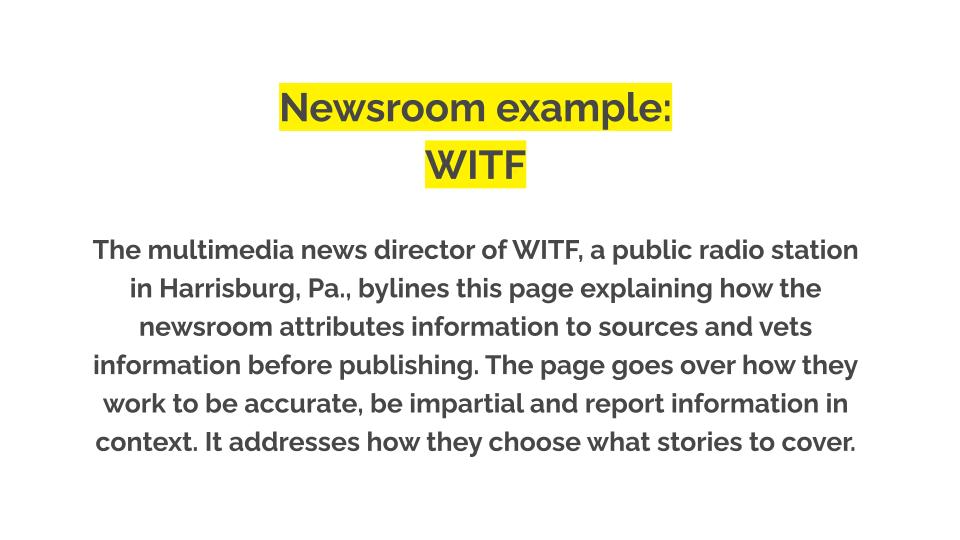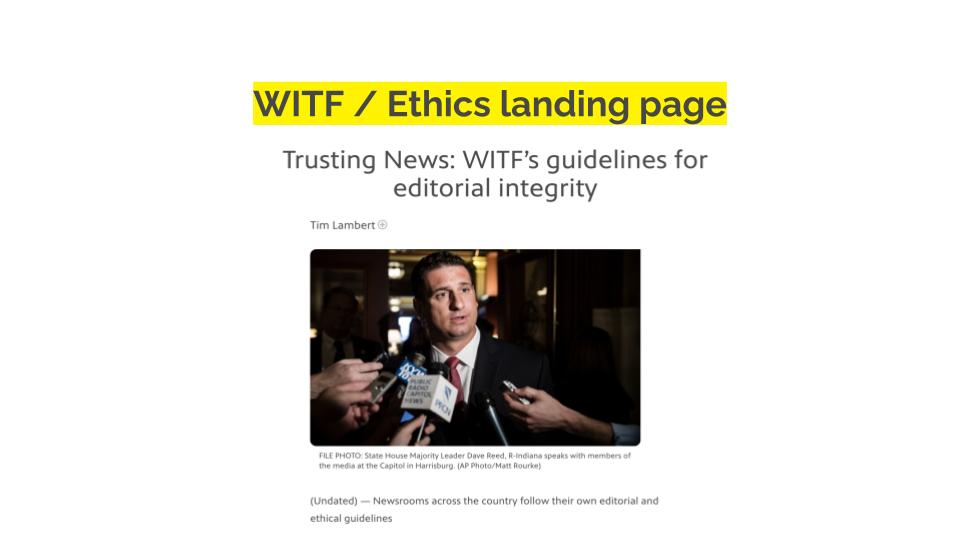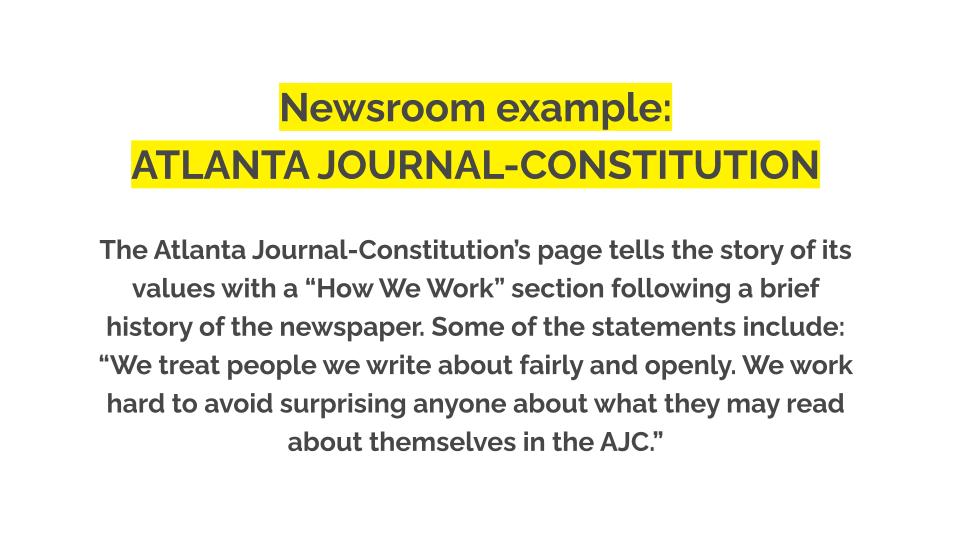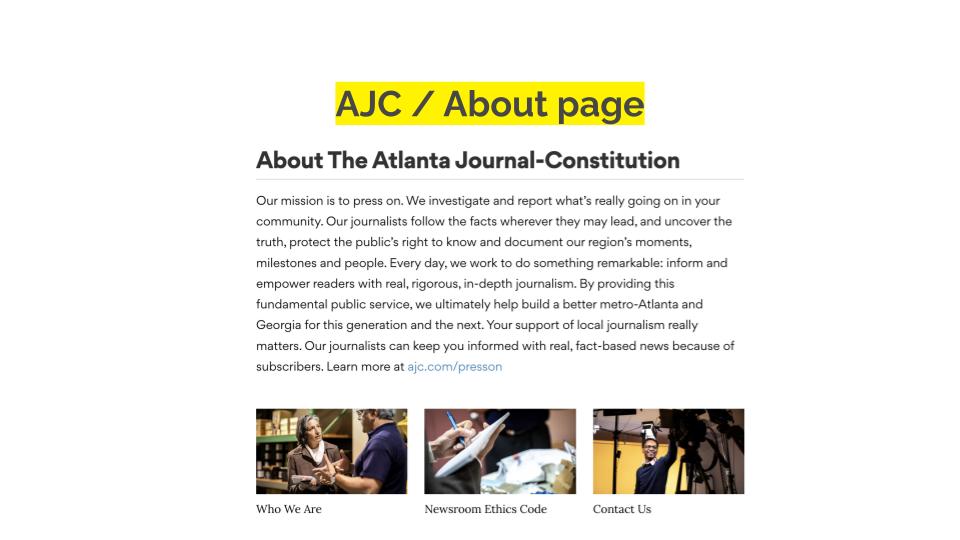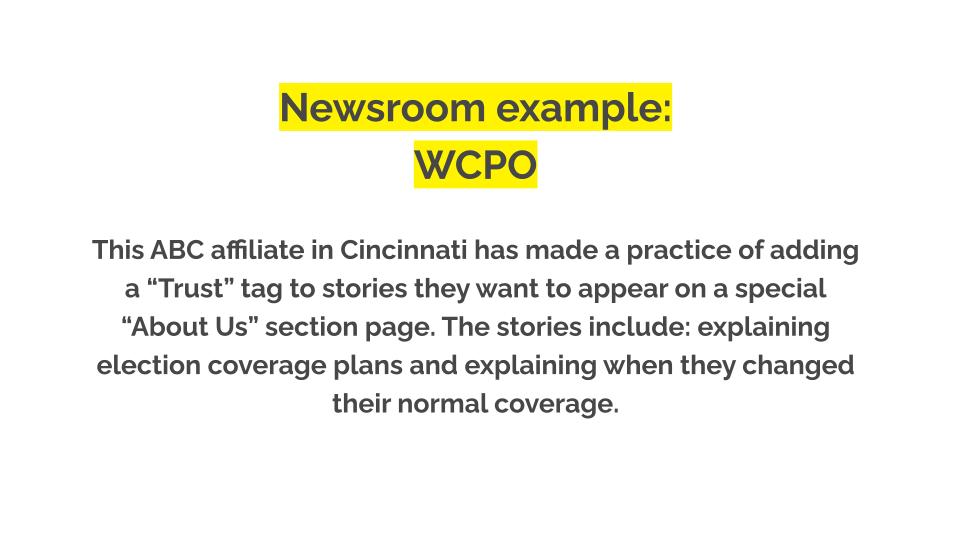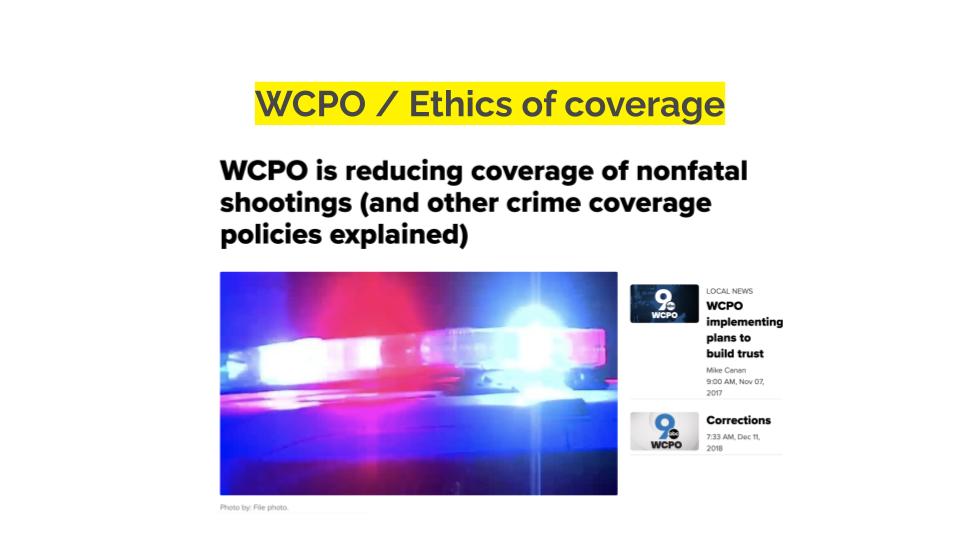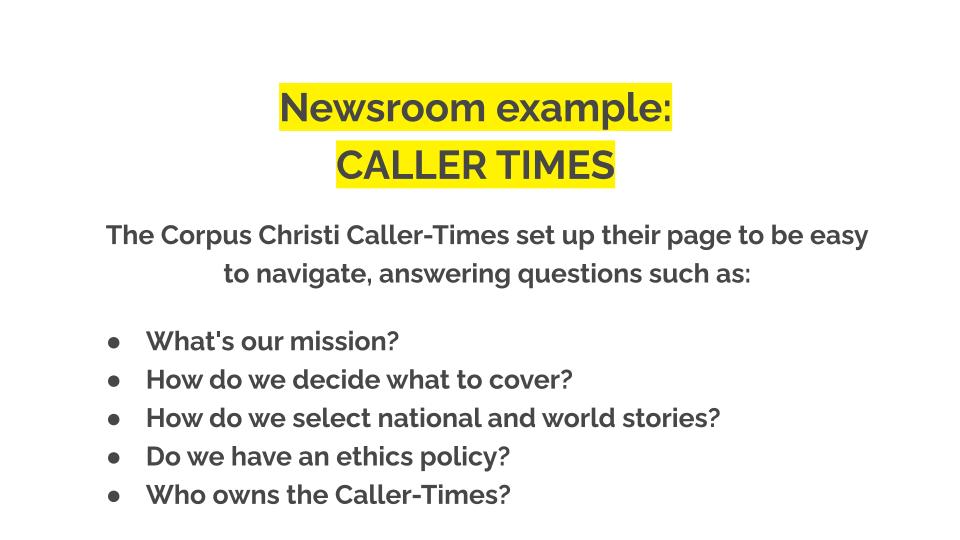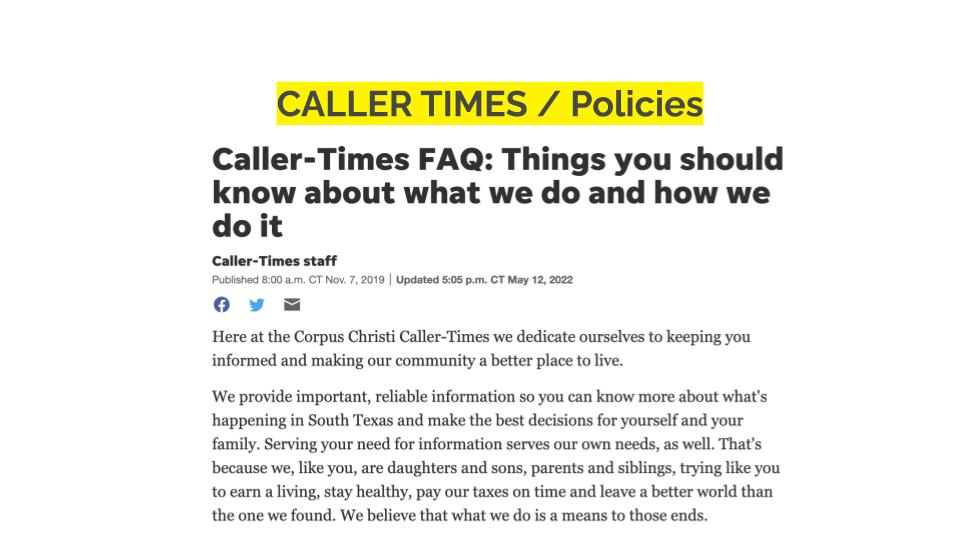ETHICS & FAIRNESS
MAKE YOUR ETHICS PUBLIC
Do journalists have ethics? It’s a question that, depending on who you ask, will probably result in very different answers.
Ask a room full of journalists, and they will probably say, “of course we do.” Ask a group of students and you’re likely to get mixed answers — eventually landing on something like, “I think so?” Ask non-journalists in your community, and it’s probably some “yes” and a lot more “no.”
We know there are standards, principles and rules that serve as the ethical foundation for what we do. But most people aren’t aware of them, much less able to describe them.
Rather than hope they’ll offer us the benefit of the doubt (which they likely won’t), we have to explain ourselves.
It’s time to to stop assuming people will give us credit for being thoughtful and careful in our reporting. It’s time to explain our decisions to the public in ways that are relevant to the content they’re consuming.
People don’t give us automatic credit for the ethical decisions we make. Rather than hope they’ll offer us the benefit of the doubt, we have to explain ourselves, and our ethics.

Goals
This Trust Kit helps you:
- assess your internal ethics and standards policies
- determine what parts of your ethics and standards policies should be shared publicly
- write public-facing policies in language the public will understand
- determine where and how you share ethics policies with users
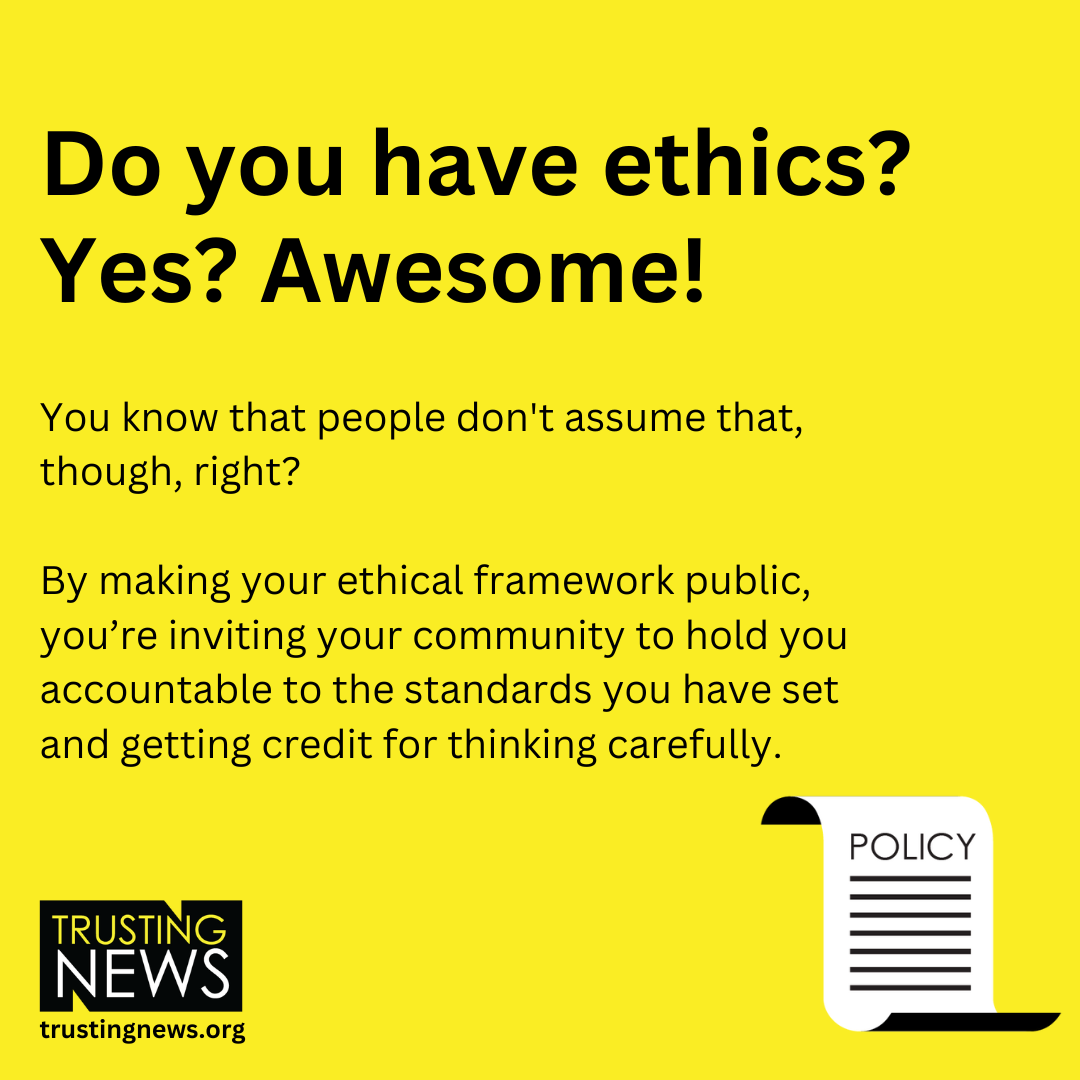

Take action
Use the steps below list to start assessing and improving your organization’s internal and external ethics policies. Click or tap the blue boxes to expand each section.
Step 1: Find/document the existing policies
You may have reviewed your newsroom’s policies on ethics and standards during one of your first days on the job. A lot of these policies probably already exist internally. But if they don’t, then that’s the first step: get it on paper.
If you are unsure where to start, below is a list of some common topics related to the reporting process people don’t understand or make negative assumptions about:
- Corrections and accuracy. Do you make corrections? How do you fact-check? How can someone request a correction?
- Financial independence. How do you make money? How does that impact news decisions?
- Political independence. Do you support the “liberal agenda”? Do you give money to candidates?
- Commitment to Diversity. Do you work to find sources from your WHOLE community?
- When and you use unnamed sources. What does an unnamed source mean? Do you know who the unnamed source is? Why did you allow them to not be named?
- Photo and video editing. When do you edit? Why do you edit? Can people tell if something has been edited?
- Conflicts of interest. Do you disclose a conflict or potential conflict?
As journalists you make multiple ethical decisions every day. It’s something you do so often it probably has become second nature and something you don’t even think about that often, unless it is a really sticky situation. It’s important to draw attention to and explain those bigger ethical decisions but also the smaller ones that seem more routine like not using the name of a minor, not publishing information until it is confirmed, fact-checking tips, etc.
To help journalists better understand how to explain the more common ethical decisions made during the reporting process, Trusting News partnered with the Society of Professional Journalists to provide practical applications of every bullet point in the SPJ Code of Ethics. Use the guide to generate ideas and language for publicly explaining the ethical decisions you make daily in your journalism, no matter how big or small they may seem.
Step 2: Discuss in the newsroom what you can make public
The best ethics policies are the ones people can find. That means they have to be publicly available and easy to find. It doesn’t mean every single policy or the exact same language you have internally has to be transferred to a public-facing page on your website.
It’s fine to only make some elements of your internal ethics policies or summaries of policies public. Remember, the goal is to address what an audience member may be most curious about, not lose them in journalism jargon they won’t understand.
If you are unsure what to move from internal to public-facing, begin by looking at the questions and criticism you’ve received from the audience in the past. Make a list and begin to publish explanations or answers to those questions.
If that list is long and seems unmanageable, tackle it over time. Your public-facing ethics policy can (and probably should) be a living document. Create it in a way that allows for quick additions or edits. As journalists how we cover people and topics changes, so we need to allow ourselves the ability to update what is public-facing and add to it.
Also, by allowing it to be a living document, you can write explanations over time and publish as you complete them instead of waiting to publish when you have every explanation ready (which, if we’re honest, will never happen because there will also be one more thing to explain).
Lastly, write explanations of your ethics and reporting standards in language people will understand. Don’t use flowery language or words you think people want to read. Providing public explanations of your ethics only works if people can find them and understand them.
Step 3: Decide on a format
Some newsrooms dedicate an entire page of their website to their ethics. At Trusting News we call this an Ethics landing page. It allows users to get more information when they have a question about why or how they report a story. The page can also serve as a great way to hold your newsroom accountable.
Some pages are formatted in an FAQ format, some link to columns or longer explainer pieces that discuss their newsroom decisions and others are formatted as more of a handbook.
Whatever format you decide on, be sure it is something that can be easily linked back to because having explanations of policies and ethics is great, but people will most likely only see them if you link to them from daily stories.
Watch the below video to learn how to assess your ethics and corrections policies and decide what should be public.
‘
See how other newsrooms do it
Here are examples of how newsrooms have publicly shared their ethics policies. For more newsroom examples, check our our newsroom example database.

We’re here to help!
Congratulations on getting this far in the Trust Kit! 🎉 We know taking the steps to earn trust isn’t always simple or easy. It takes time and often requires a shift in newsroom routines or workflows.
Any progress you make on implementing strategies in this Trust Kit should be celebrated as a win!
